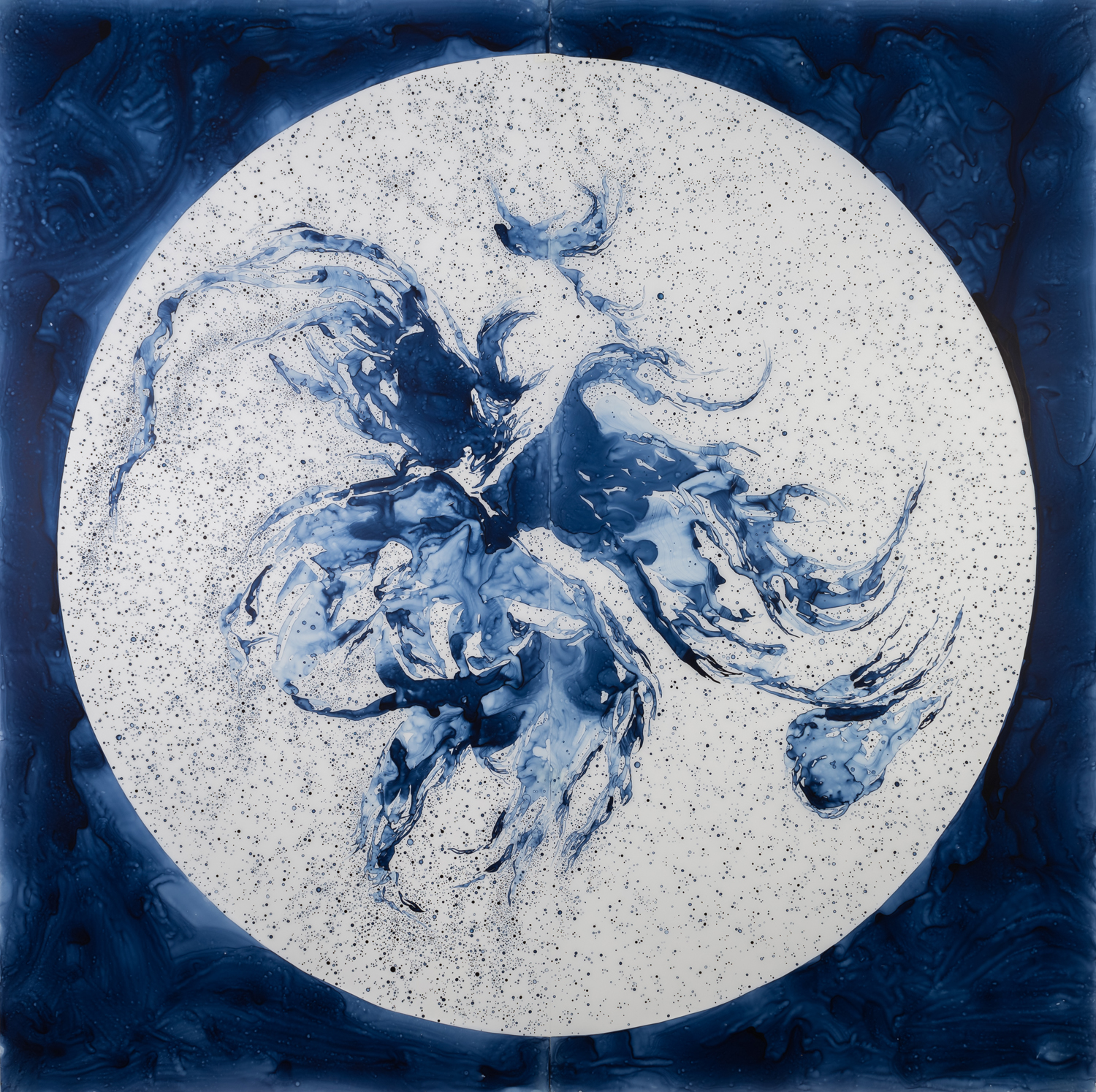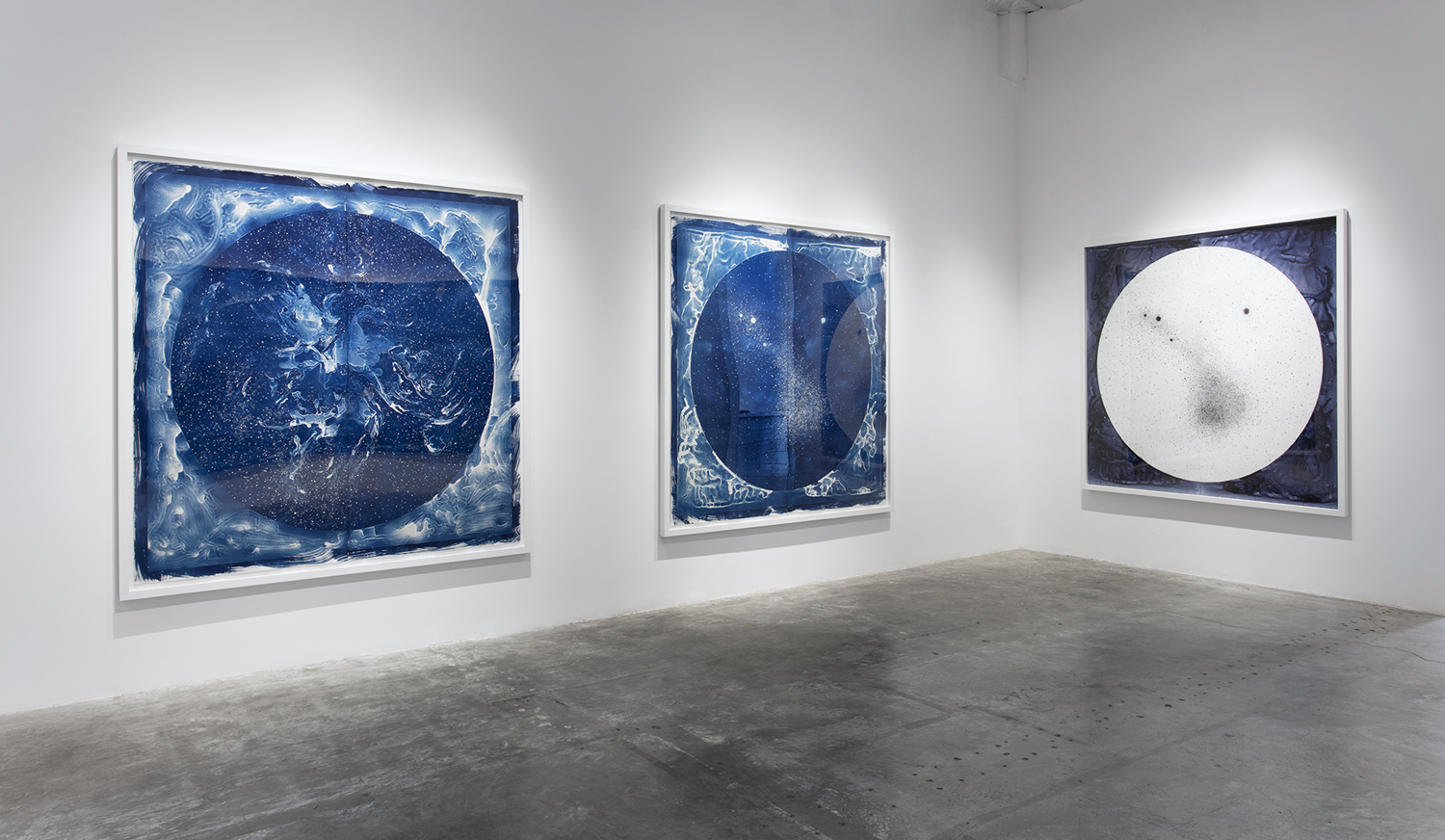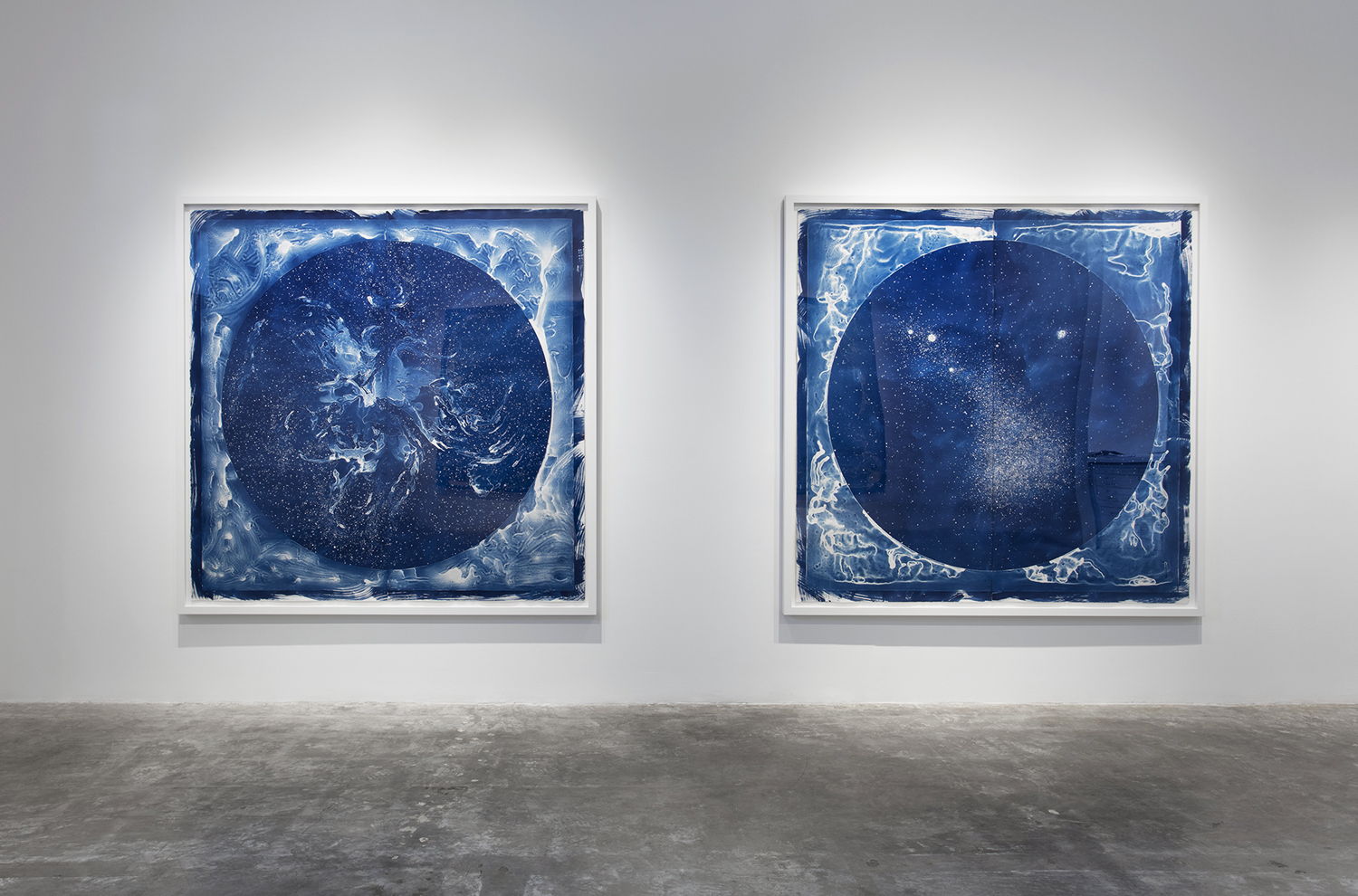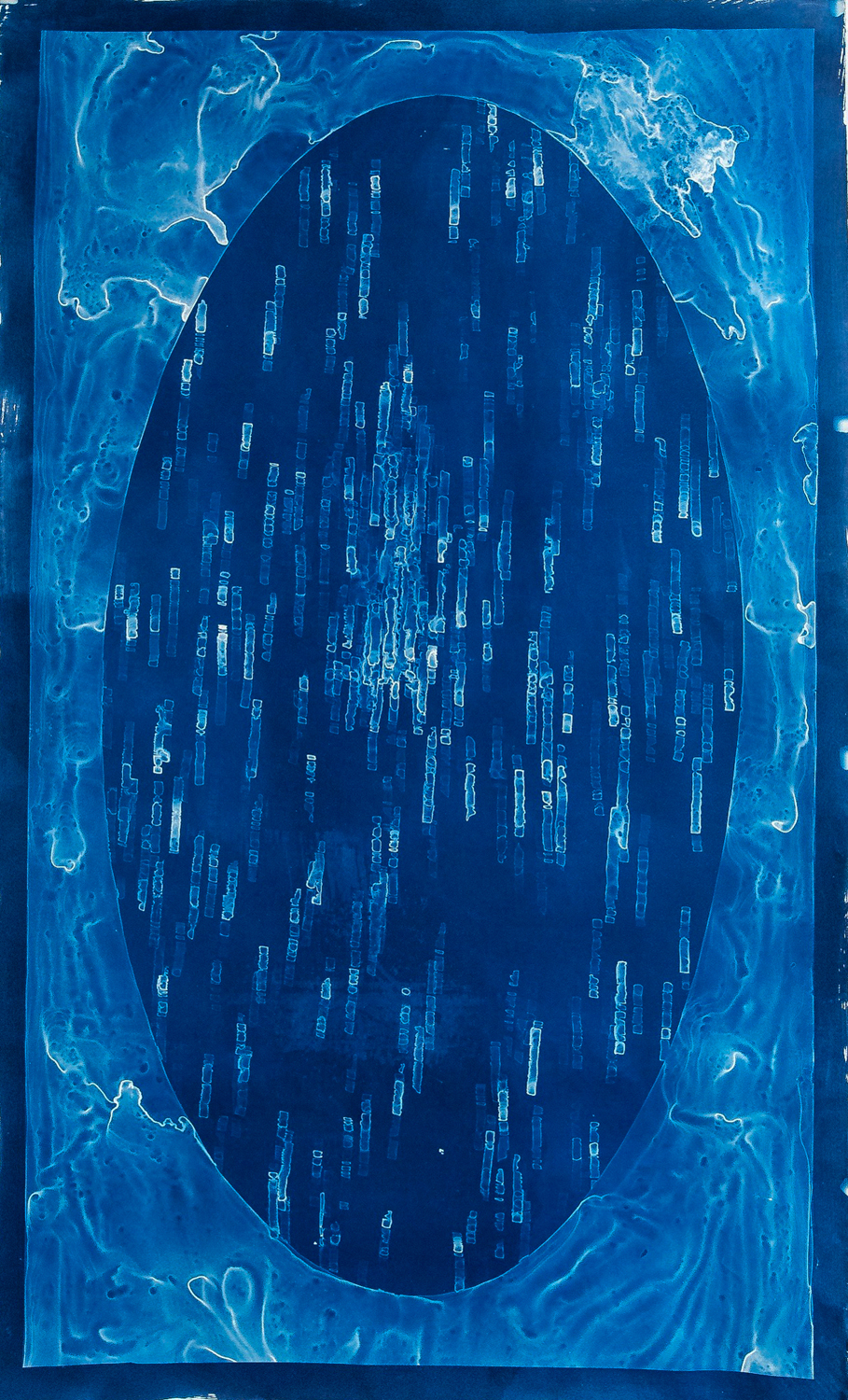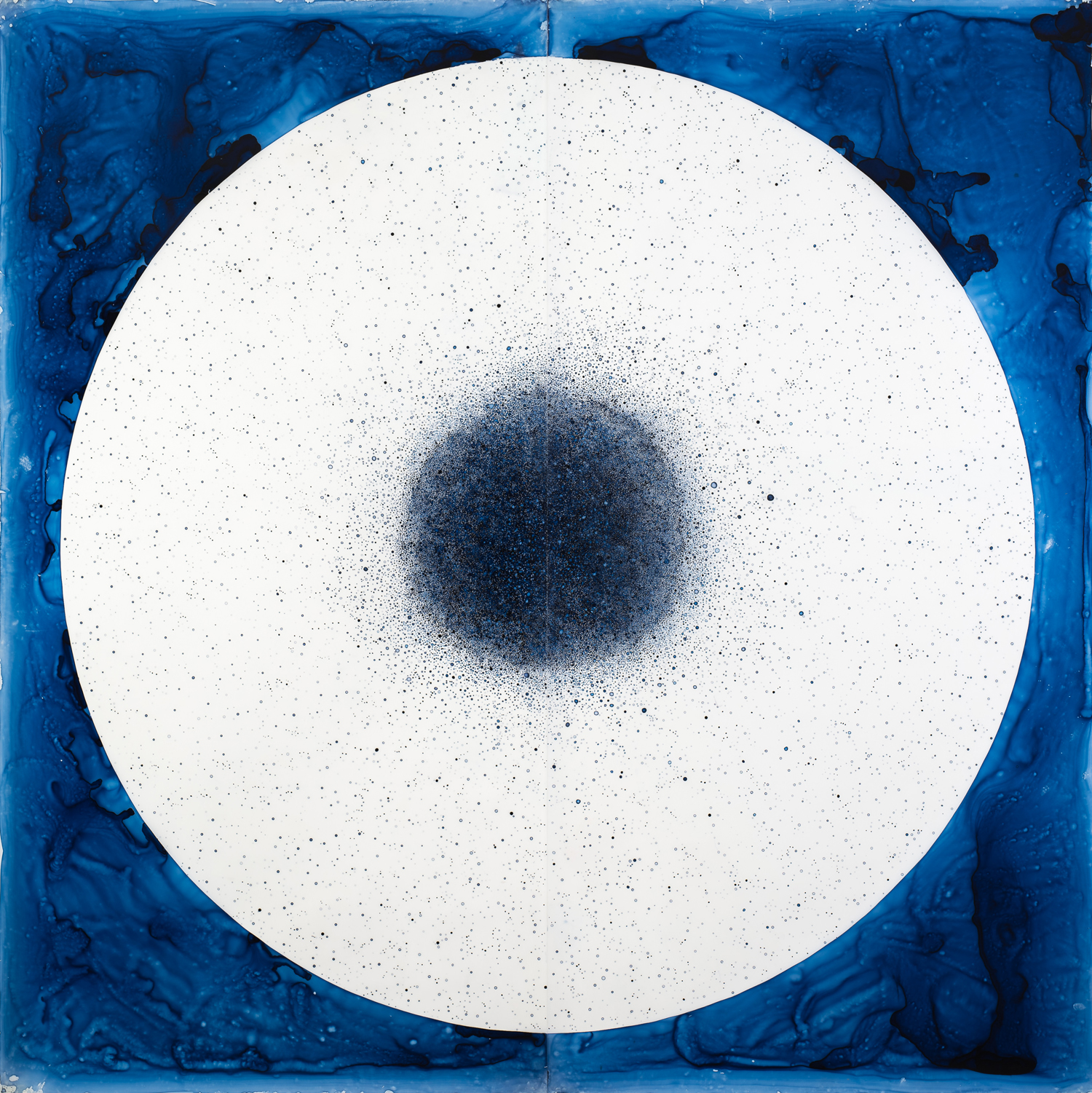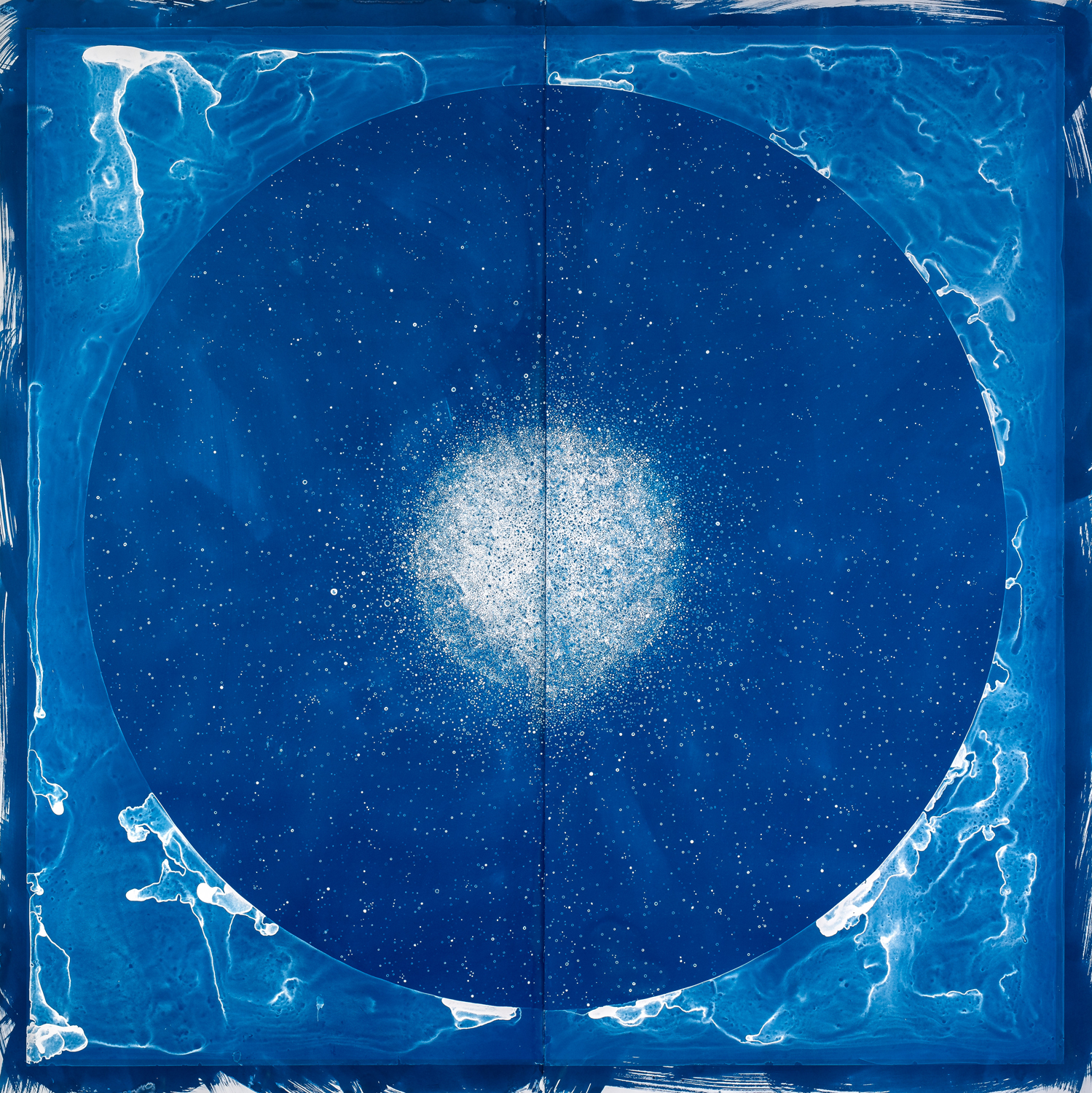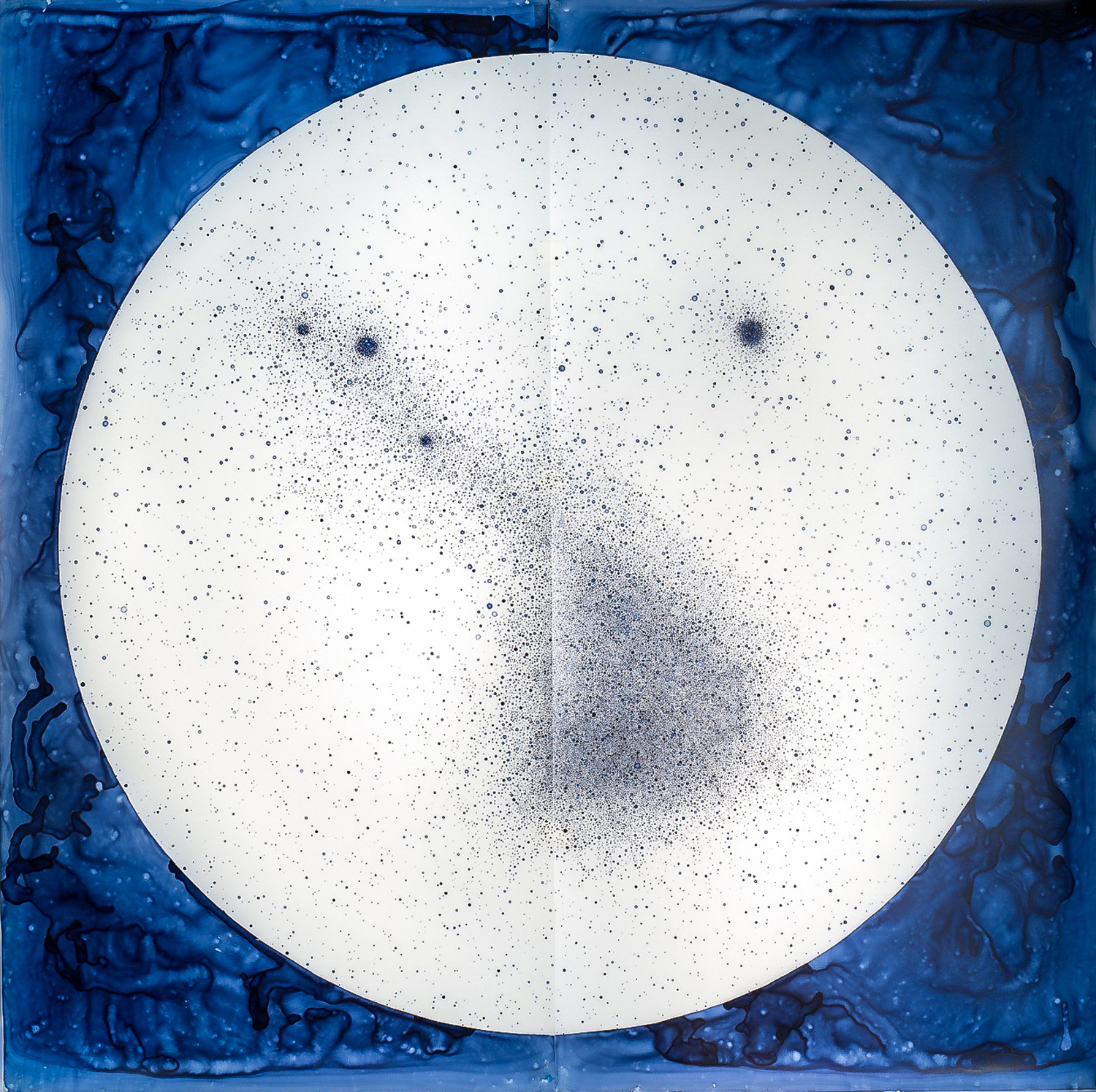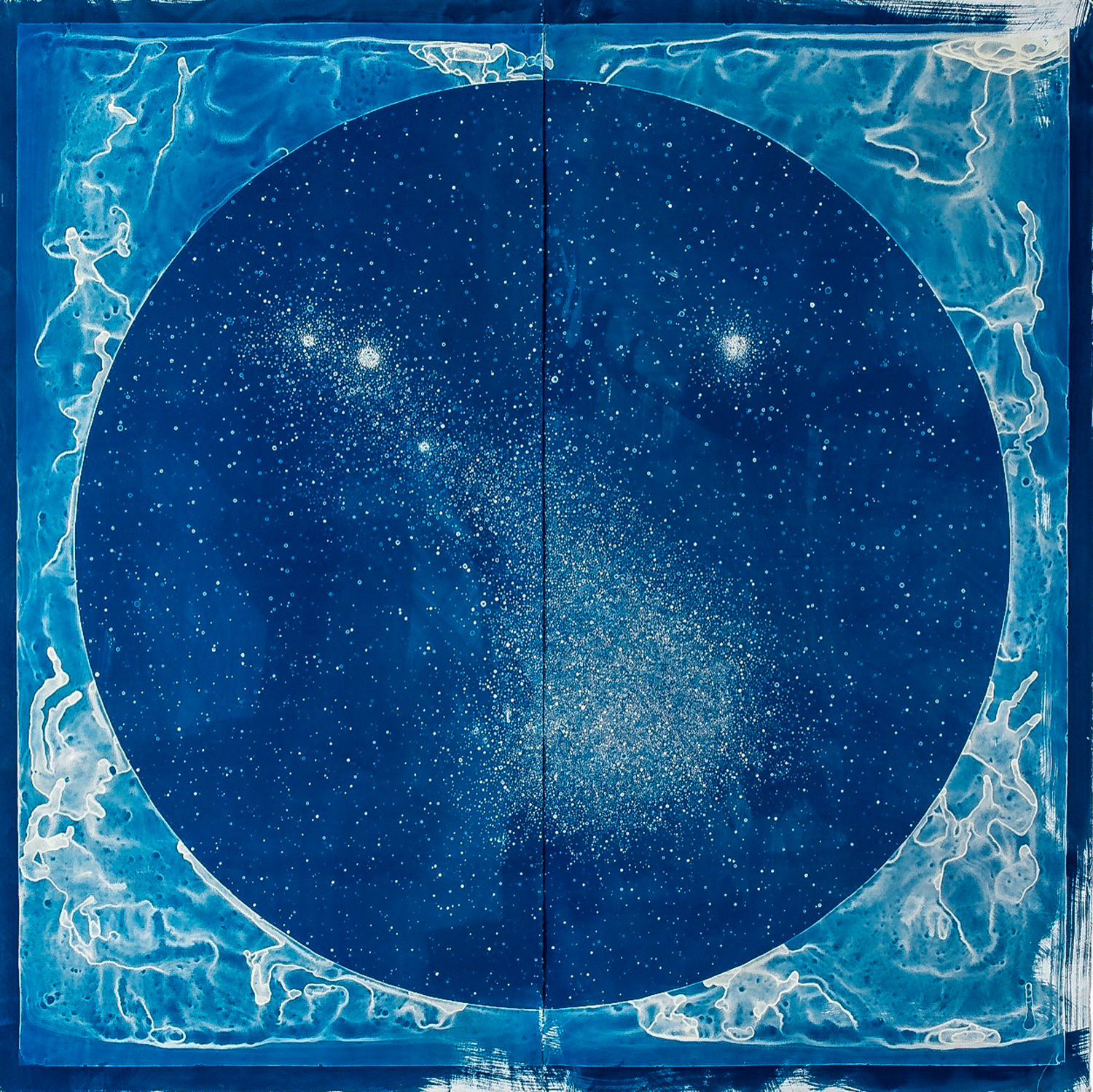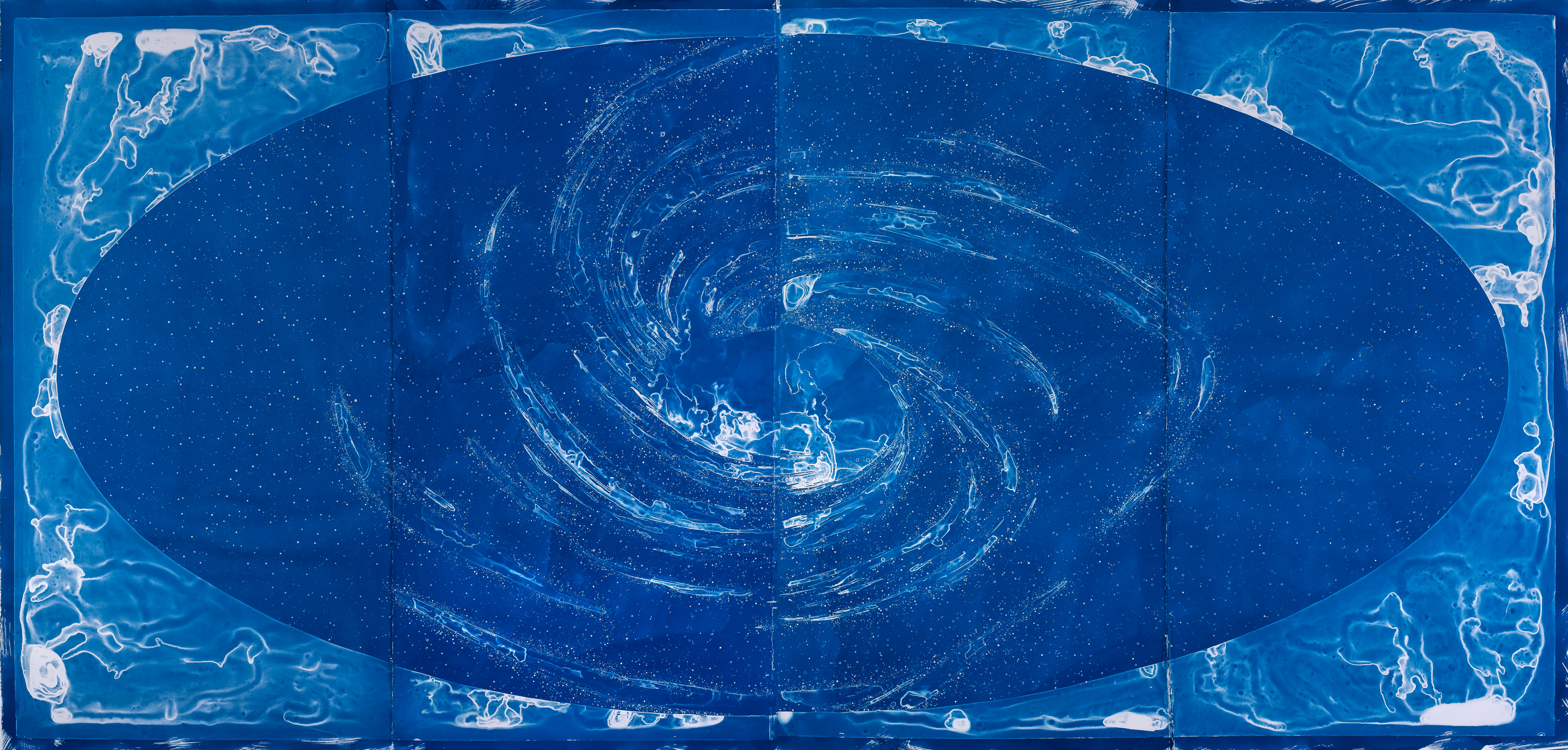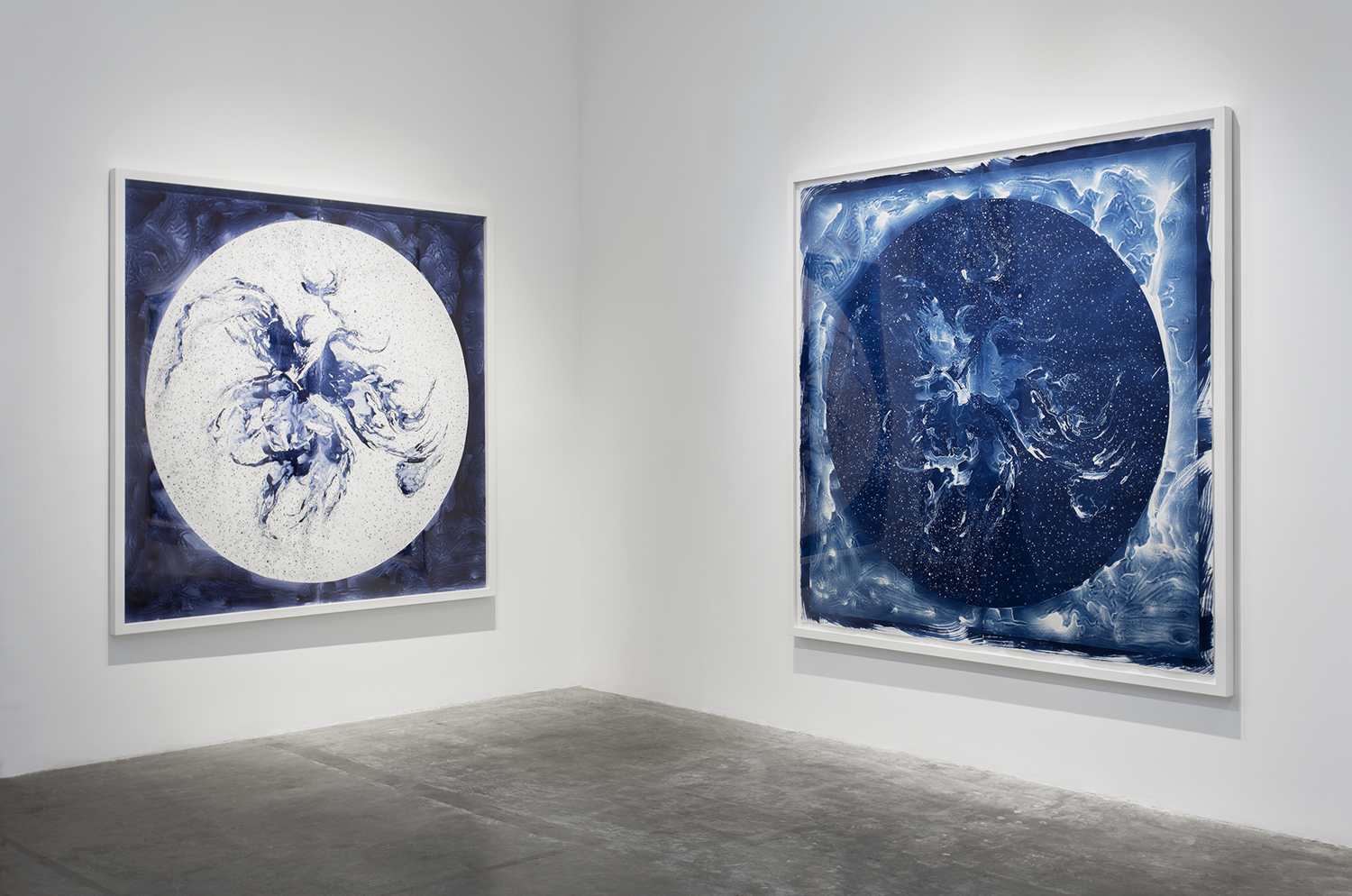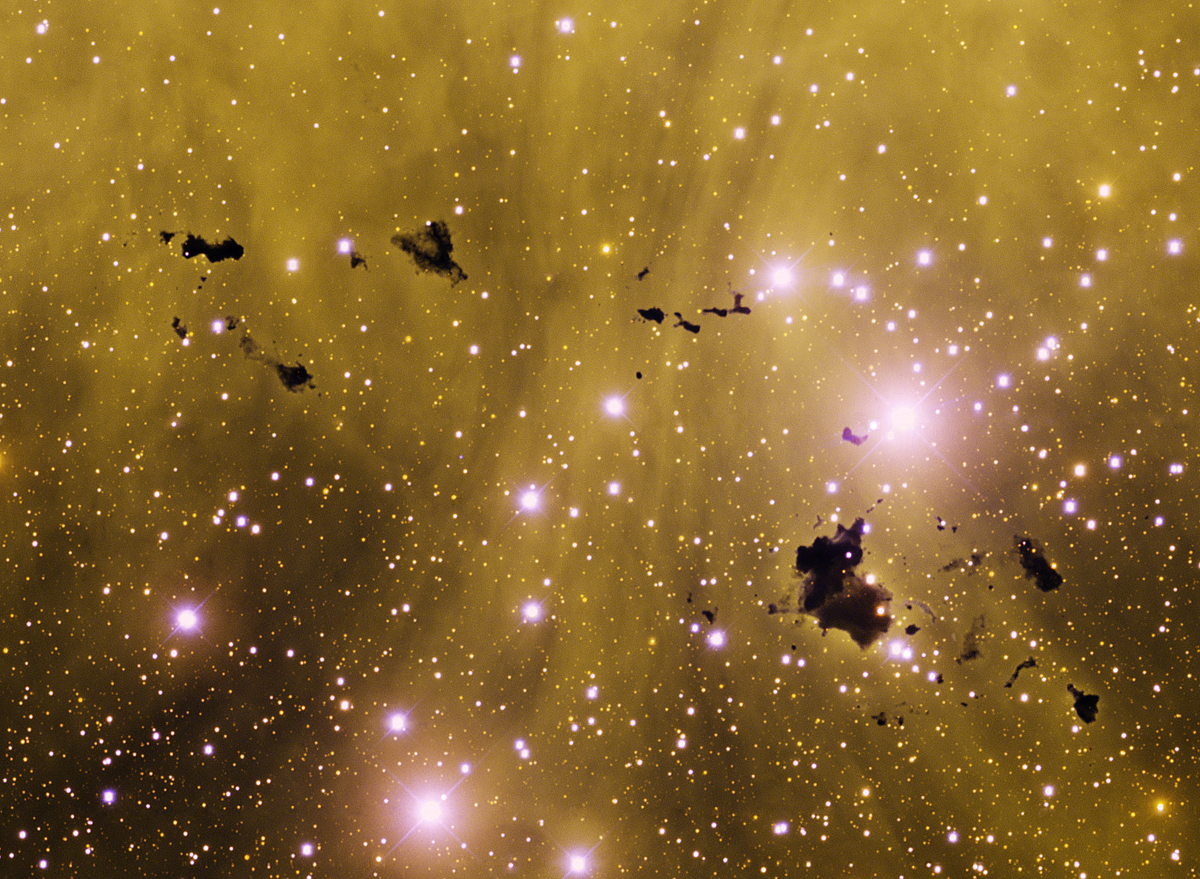'Your Body is a Space That Sees Us' Art Exhibit (Gallery)

Nebula
Visual artist Lia Halloran's new exhibit, "Your Body is a Space That Sees Us," was inspired by women astronomers from throughout history. This image shows an original painting by Halloran of a cosmic nebula, based on a photograph taken by the astronomer Williamina Fleming, who helped create the modern classification system for stars.
The Universe on Display
The works in the new exhibit are a combination of paintings and pieces created with a process called cyanotyping. Halloran starts by painting scenes from glass plate images of cosmic objects, taken from the Harvard College Observatory's Astronomical Photographic Plate Collection. The images selected by Halloran were taken by a group of women astronomers known as the "Harvard Computers," in the late 1800s.
The Universe Inverted
The paintings, done on semi-transparent paper, are pressed against water color paper, and painted over with a light-sensitive light. When exposed to sunlight, the paint creates a negative image of the original painting.
Spectra
This piece by Halloran is based on stellar spectra (which reveal the chemical composition of a star) originally captured by astronomer Annie Jump Cannon, who created the modern stellar classification system. Halloran created these works from photographic plates captured by Cannon and her colleagues at Harvard.
Globular Cluster
This work by Halloran shows a globular cluster (a dense collection of stars) imaged by astronomer Helen Sawyer.
Globular Cluster Cyanotype
The cyanotype print of the painting depicting a globular cluster.
Magellanic Cloud Painting
This work depicts the Small Magellanic Cloud. Astronomer Henrietta Swan Leavitt studied variable stars in the Large and Small Magellanic Clouds and came up with a method for determining distances to cosmic objects.
Breaking space news, the latest updates on rocket launches, skywatching events and more!
Magellanic Cloud Cyanotype
The cyanotype print of the painting depicting the Small Magellanic Cloud.
Galaxy
The largest piece in Halloran's exhibit depicts a swirling galaxy.
Through the Scope
Halloran also framed the paintings in circular frames, which may remind viewers of looking through a telescope, or into a framed mirror. Along with the title of the exhibit, this feature of the works is meant to draw attention back to the viewer.
Positive and Negative
The original paintings are done on white paper with blue ink; the cynaotyped images have an inverted color scheme.
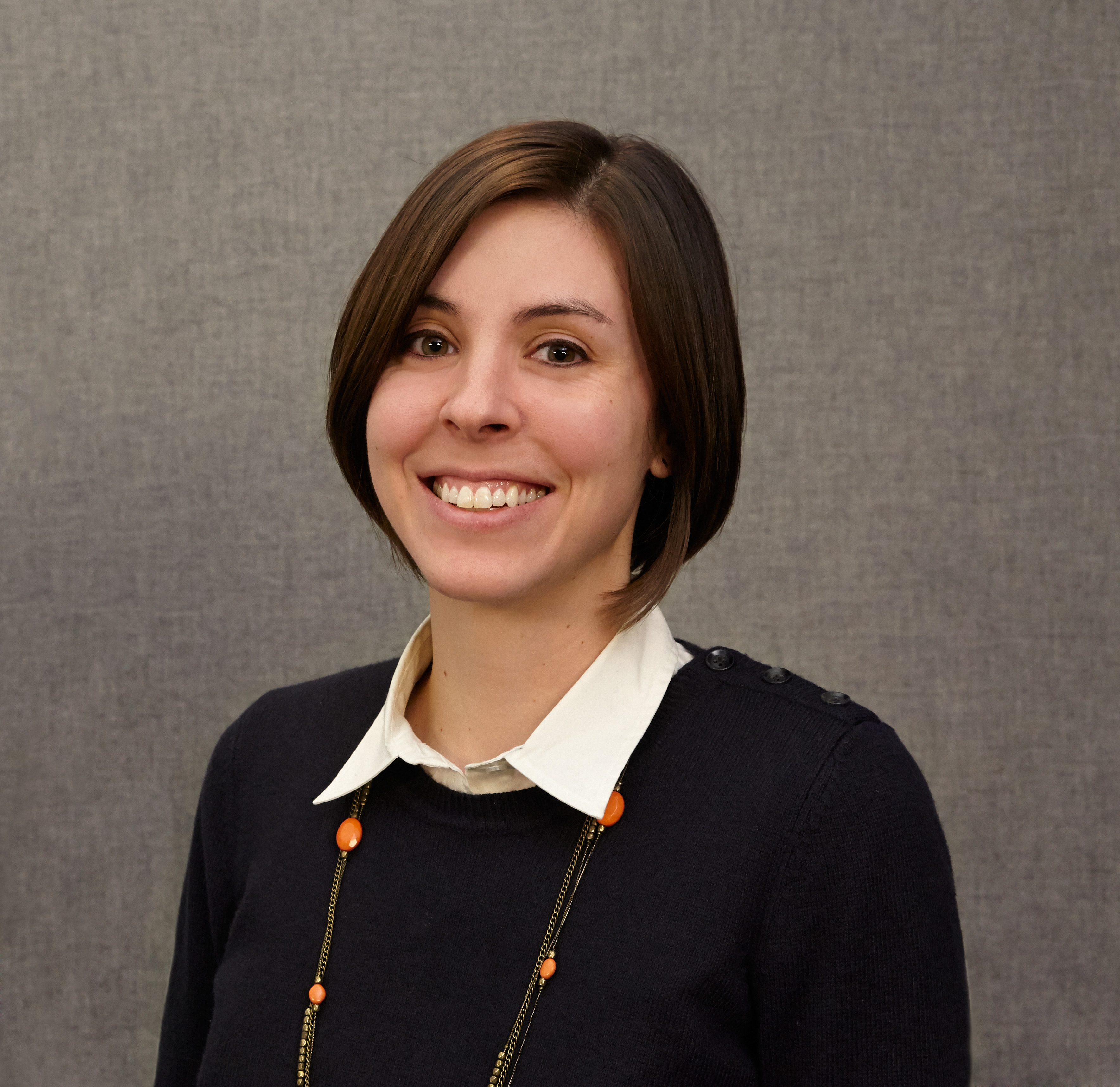
Calla Cofield joined Space.com's crew in October 2014. She enjoys writing about black holes, exploding stars, ripples in space-time, science in comic books, and all the mysteries of the cosmos. Prior to joining Space.com Calla worked as a freelance writer, with her work appearing in APS News, Symmetry magazine, Scientific American, Nature News, Physics World, and others. From 2010 to 2014 she was a producer for The Physics Central Podcast. Previously, Calla worked at the American Museum of Natural History in New York City (hands down the best office building ever) and SLAC National Accelerator Laboratory in California. Calla studied physics at the University of Massachusetts, Amherst and is originally from Sandy, Utah. In 2018, Calla left Space.com to join NASA's Jet Propulsion Laboratory media team where she oversees astronomy, physics, exoplanets and the Cold Atom Lab mission. She has been underground at three of the largest particle accelerators in the world and would really like to know what the heck dark matter is. Contact Calla via: E-Mail – Twitter
